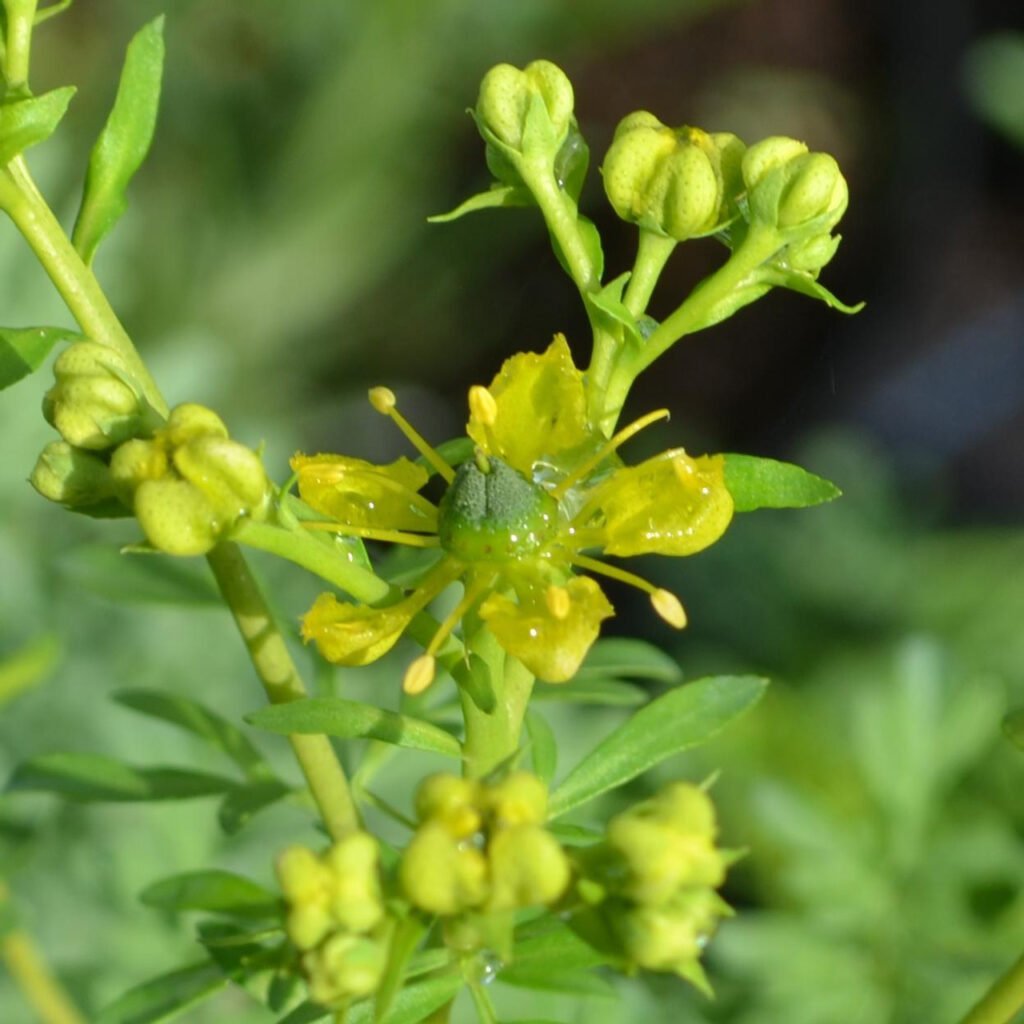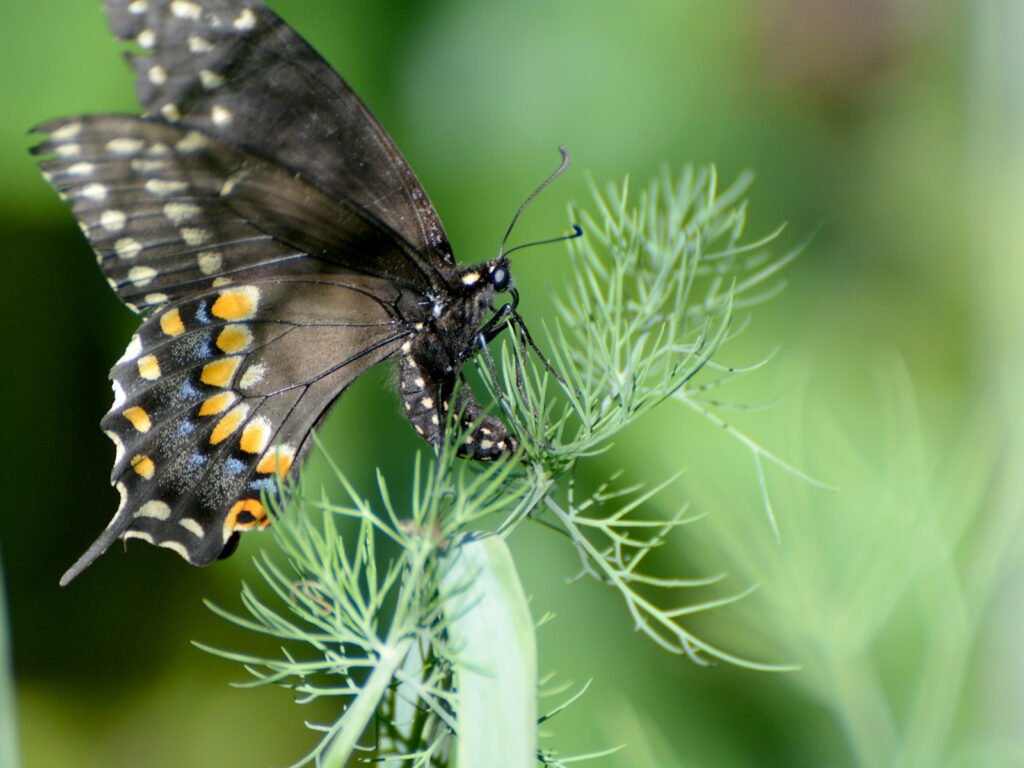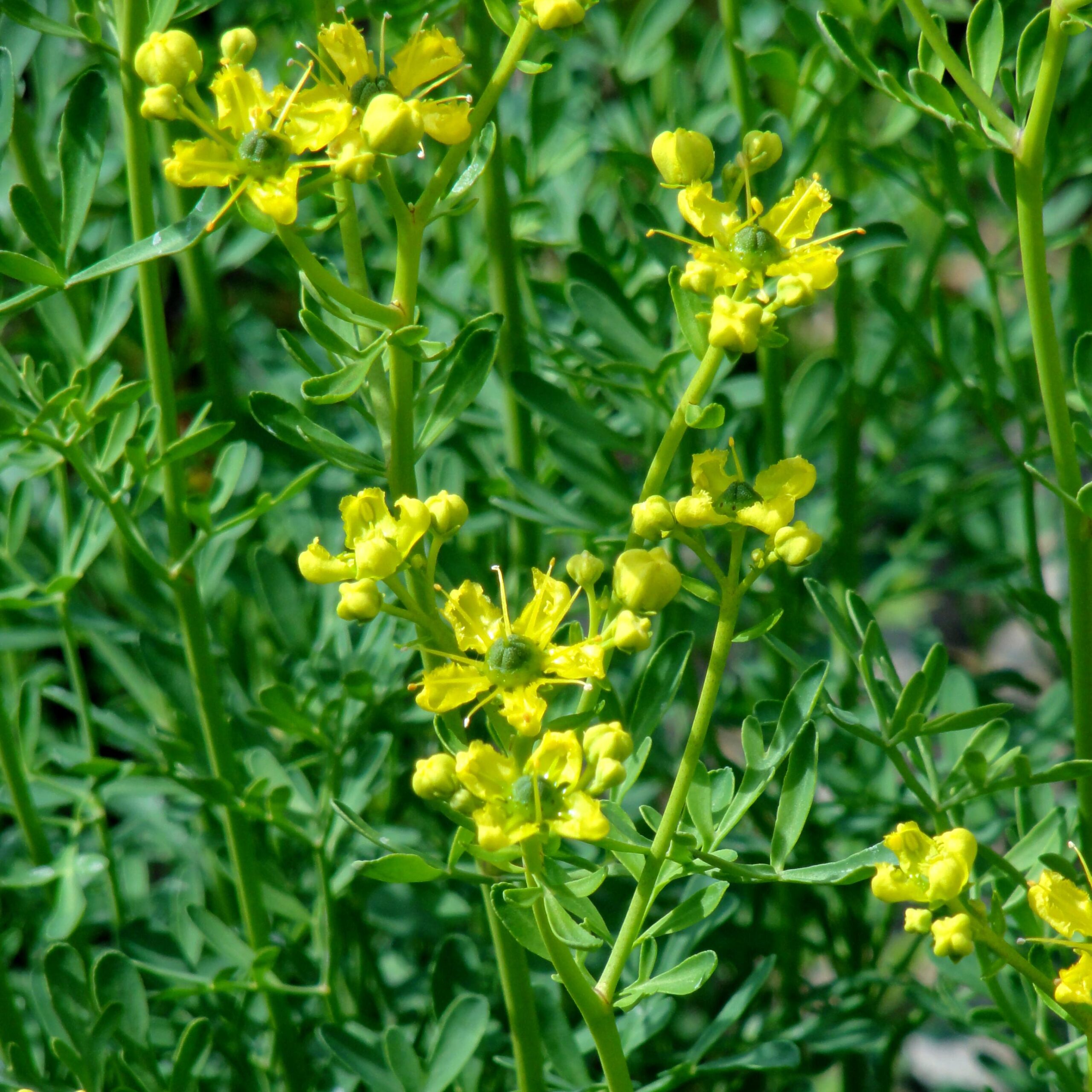The butterfly garden, with its flurry of colors and activity, is a sight to behold. Among the myriad of plants that beckon these winged wonders, Rue stands out as a classic favorite. Known scientifically as Ruta graveolens, Rue is not only a visual delight but also a magnet for certain butterfly species.
A Glimpse into Rue’s World
Rue is a perennial plant that’s native to the Balkan Peninsula. It has bluish-green leaves that are finely divided, giving them a feathery appearance. The yellow flowers, which bloom in summer, are composed of rounded clusters that offer a stark contrast to the plant’s foliage.

In Christian symbolism, for instance, Rue has been referred to as the “herb of grace” and was used in church rites as a symbol of regret or repentance. This led to the word for the Rue plant to become a verb, rue, that means “to regret or remorse.”
Butterfly Attraction
What makes Rue a must-have in a butterfly garden?
- Larval Host: Rue is a primary host plant for the Black Swallowtail butterfly. Female Black Swallowtails lay their eggs on the plant, and upon hatching, the caterpillars voraciously feed on its leaves. The relationship between the Black Swallowtail and Rue is so intertwined that often butterfly enthusiasts plant Rue specifically to attract this species.
- Nectar Source: While Rue is primarily known as a host plant, its flowers can also serve as a nectar source for various butterfly species, making it a dual-purpose plant in butterfly gardens.
Cultural and Medicinal Significance
Beyond its butterfly attraction, Rue has a rich history of cultural and medicinal use:
- Historical Uses: In ancient times, Rue was used as a culinary herb, though it’s less favored today due to its strong, bitter taste. Historically, it was also believed to ward off evil spirits.
- Medicinal Uses: Rue has been used in traditional medicine for various purposes, from alleviating digestive problems to treating arthritis. However, it’s crucial to approach Rue with caution. When handled, the plant can cause skin irritations in some people, and ingestion can be toxic in large amounts.

Growing Rue in Your Garden
Rue is a hardy plant, preferring full sun but tolerating partial shade. It thrives in well-draining soil and is drought-resistant once established. It’s an excellent choice for rock gardens or as a border plant. However, due to its potential to cause skin irritations, it’s advisable to plant Rue in areas where it won’t be frequently brushed against, especially if children frequent the garden.

500 Bouquet Dill Seeds for North America – Black Swallowtail
With more than one full gram in every pack, you’ll receive an astonishing number of seeds (well over 500) – enough to transform your garden into a dill paradise. Attracts Black Swallowtails. For all North America.
In Conclusion
Rue, with its rich history and significance in the butterfly garden, remains a classic choice for enthusiasts. Whether you’re looking to attract Black Swallowtails or simply want a hardy, low-maintenance plant with a touch of history, Rue might just be the perfect addition to your garden.

The Adventures of Johnny Butterflyseed – Author Signed First Edition Children’s Book
Save the monarchs!
Johnny Butterflyseed and his fairy friend, Raven Silverwing, embark on a mission to save the rapidly disappearing butterflies. They enlist the help of Queen Venus Goldwing and her kingdom of monarchs to educate and inspire kids to become butterfly farmers. At first, Johnny faces his own internal struggle with self-doubt and fear in his ability to make a difference, but then soon develops a mindset that allows him to not only get started, but also make progress one day at a time. Through challenge after challenge, Johnny learns that he is not alone in his mission and that there are many people who want to help. Together, Johnny, Raven, and Queen Venus educate thousands of children on becoming butterfly farmers.
